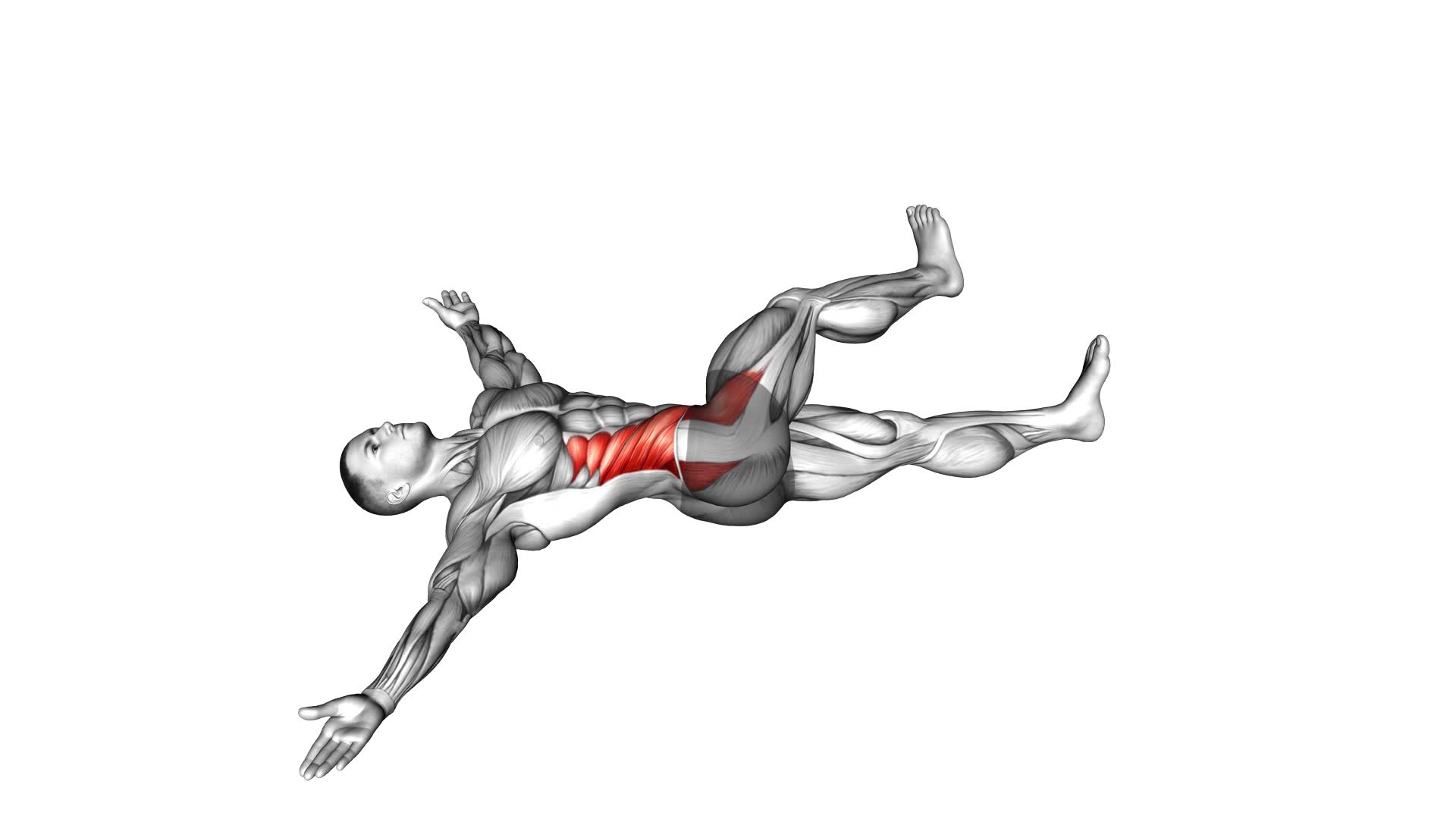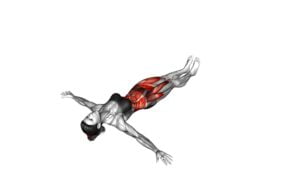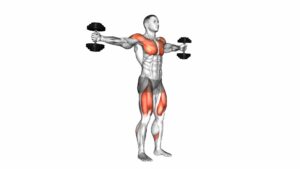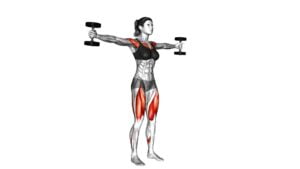Iron Cross Stretch – Video Exercise Guide & Tips

Are you looking for a new stretch to add to your workout routine? The Iron Cross Stretch is a great option.
Watch This Exercise Video
In this video exercise guide, we'll show you step-by-step how to perform the stretch correctly. We'll also provide tips and common mistakes to avoid, as well as modifications for different fitness levels.
With the Iron Cross Stretch, you'll improve flexibility and target multiple muscle groups.
Get ready to take your stretching routine to the next level!
Key Takeaways
- The Iron Cross Stretch improves flexibility and range of motion.
- It targets the shoulders, chest, and upper back.
- It helps prevent injuries and muscle imbalances.
- Incorporating the stretch into a warm-up or cool-down routine enhances athletic performance.
Benefits of the Iron Cross Stretch
Achieve greater flexibility and improve your overall range of motion by incorporating the Iron Cross Stretch into your workout routine. Stretching is an essential component of any fitness program, as it helps to increase muscle flexibility and prevent injuries. The Iron Cross Stretch targets the shoulders, chest, and upper back, providing numerous benefits for your body.
One of the key advantages of the Iron Cross Stretch is its ability to modify and adapt to different fitness levels. Whether you're a beginner or an experienced athlete, there are variations of this stretch that can be tailored to your needs. For beginners, you can start by performing the stretch with your arms at a higher position, gradually lowering them over time as you gain more flexibility. Advanced individuals can challenge themselves by adding resistance bands or weights to enhance the stretch.
Stretching plays a crucial role in fitness by improving muscle elasticity and joint mobility. It helps to maintain proper posture, prevent muscle imbalances, and enhance athletic performance. Incorporating the Iron Cross Stretch into your routine can help alleviate tightness in the shoulders and chest, which is common for individuals who spend long hours sitting or working at a desk.
Equipment Needed for the Exercise
To perform the Iron Cross Stretch, you'll need some basic equipment. The required equipment includes:
- A yoga mat or exercise mat for comfort and stability during the stretch.
- Additionally, you may want to have a strap or towel to assist with the exercise and improve your flexibility.
Required Equipment for Exercise
You will need certain equipment for the Iron Cross Stretch exercise. This exercise requires minimal exercise equipment and workout accessories. Here's what you'll need:
- Exercise mat: A comfortable and non-slip mat will provide cushioning and support for your body during the exercise.
- Resistance band: A resistance band can be used to assist with the stretch and provide additional resistance for a more challenging workout.
- Towel or strap: If you have tight shoulders or limited flexibility, a towel or strap can help you reach your arms behind your back and perform the stretch more effectively.
- Optional: Yoga blocks or bolsters: These props can be used to modify the exercise and provide support if you're not able to fully extend your arms.
Remember to always choose equipment that's appropriate for your fitness level and consult with a professional if you're unsure about the right equipment to use.
Essential Exercise Accessories
To properly perform the Iron Cross Stretch exercise, it's important to have the essential exercise accessories. This exercise requires minimal equipment, making it accessible to most individuals.
The main exercise equipment you'll need is a yoga mat or a comfortable surface to lie down on. This will provide support and cushioning for your body during the stretch.
Additionally, it's beneficial to have a strap or towel to assist with the stretch. This can be used to hold your leg in position and deepen the stretch.
By incorporating these exercise accessories, you'll be able to perform the Iron Cross Stretch effectively and safely, maximizing the benefits of the exercise.
Now, let's explore some equipment alternatives for exercise that you can use if you don't have the essential exercise accessories.
Equipment Alternatives for Exercise
If you don't have the essential exercise accessories, there are alternative equipment options you can use for the Iron Cross Stretch. Here are some equipment substitutions and alternative stretches to consider:
- Equipment Substitutions:
- Instead of a resistance band, you can use a towel or a belt to help with the stretch.
- If you don't have a yoga block, you can use a stack of books or a sturdy pillow to support your lower back.
- Alternative Stretches:
- If you find the Iron Cross Stretch too challenging, you can try a seated forward fold or a standing forward bend to stretch your hamstrings and lower back.
- For a different stretch that targets your hip flexors and quadriceps, you can try a kneeling lunge or a standing quad stretch.
Step-By-Step Guide to Performing the Iron Cross Stretch
Now let's talk about the points to keep in mind when performing the Iron Cross Stretch.
Firstly, it's important to understand the benefits of this stretch, which include improved flexibility and increased range of motion in the shoulders and chest.
Additionally, we'll discuss common mistakes to avoid to ensure you perform the stretch safely and effectively.
Benefits of Stretch
Maximize the benefits of stretch by incorporating the step-by-step guide to performing the Iron Cross Stretch.
Stretching before and after workouts is crucial for muscle recovery and injury prevention. Here are some key benefits of incorporating stretching into your routine:
- Improved flexibility: Stretching helps increase the range of motion in your joints and muscles, allowing for better overall flexibility.
- Enhanced muscle recovery: Stretching after a workout helps reduce muscle soreness and tightness by increasing blood flow to the muscles, aiding in their recovery.
- Injury prevention: Stretching helps improve muscle elasticity, reducing the risk of strains, sprains, and other injuries during physical activity.
- Improved posture: Stretching can help lengthen tight muscles and improve muscle imbalances, leading to better posture and alignment.
Common Mistakes to Avoid
You can avoid common mistakes and get the most out of the Iron Cross Stretch by following these step-by-step instructions.
One common mistake to avoid is rounding your back during the stretch. To maintain proper form, keep your spine straight and engage your core muscles.
Another mistake isn't using a strap or towel to assist in the stretch. By using a strap, you can gradually increase the intensity of the stretch without straining your muscles.
Additionally, many people make the mistake of holding their breath while performing the stretch. Remember to breathe deeply and relax into the stretch.
Lastly, rushing through the exercise is another common mistake. Take your time and focus on proper alignment and form to maximize the benefits of the Iron Cross Stretch.
Common Mistakes to Avoid During the Exercise
To ensure proper form and maximize the benefits of the Iron Cross Stretch, it's important to be aware of common mistakes that should be avoided during the exercise. By avoiding these mistakes, you can prevent injuries and achieve better results.
Here are some common mistakes to watch out for:
- Lifting the shoulders: One common mistake is lifting the shoulders off the ground during the stretch. This not only puts unnecessary strain on the neck and shoulders but also reduces the effectiveness of the stretch. To avoid this, keep your shoulders firmly pressed against the ground throughout the exercise.
- Overextending the legs: Another mistake is overextending the legs during the stretch. This can lead to hyperextension of the knees and increase the risk of injury. To maintain proper form, keep a slight bend in your knees and focus on stretching your inner thighs and hips.
- Not engaging the core: Proper form in the Iron Cross Stretch requires engaging the core muscles. Failing to do so can put excessive strain on the lower back. Remember to activate your core by drawing your navel towards your spine and maintaining a stable and strong center.
- Rushing the stretch: Lastly, rushing through the exercise is a common mistake. To get the most out of the stretch, take your time and focus on deepening the stretch gradually. Rushing can lead to improper form and diminish the benefits of the exercise.
Modifications and Variations for Different Fitness Levels
To accommodate individuals with different fitness levels, there are various modifications and variations that can be made to the Iron Cross Stretch.
If you're a beginner, it's important to start with modifications that will help you build strength and flexibility gradually. One modification you can try is bending your knees slightly and keeping your feet on the ground instead of lifting them off. This will reduce the intensity of the stretch and make it more manageable for beginners. Another modification is to use a resistance band or towel to assist you in reaching your ankles. This will provide additional support and help you maintain proper form.
For those who are more advanced and looking for a challenge, there are several variations you can incorporate into your Iron Cross Stretch routine. One advanced variation is to perform the stretch on an unstable surface, such as a stability ball or a Bosu ball. This will engage your core muscles even more and require greater balance and stability. Another advanced variation is to add a twist to the stretch by reaching your opposite hand towards the opposite foot. This will increase the rotational component of the stretch and target your oblique muscles.
Remember to always listen to your body and choose modifications or variations that suit your current fitness level. It's important to gradually progress and challenge yourself, but not at the expense of proper form and safety.
Tips for Incorporating the Iron Cross Stretch Into Your Workout Routine
To effectively incorporate the Iron Cross Stretch into your workout routine, start by gradually increasing the intensity and duration of the stretch. This will help you maximize flexibility and get the most out of this exercise. Here are some tips to help you incorporate the Iron Cross Stretch into your routine:
- Start with a warm-up: Before attempting the Iron Cross Stretch, make sure to warm up your muscles with some light cardio or dynamic stretching. This will help prepare your body for the stretch and reduce the risk of injury.
- Use modifications: If you're new to the Iron Cross Stretch or have limited flexibility, you can modify the exercise to suit your needs. For example, you can use a resistance band or towel to assist you in reaching your full range of motion.
- Gradually increase intensity: As you become more comfortable with the Iron Cross Stretch, try to deepen the stretch by extending your arms and legs further apart. Remember to listen to your body and only go as far as feels comfortable.
- Incorporate it into your routine: The Iron Cross Stretch can be done as part of your warm-up or cool-down routine. You can also include it in your stretching routine to improve flexibility and prevent muscle imbalances.
Frequently Asked Questions
How Long Should I Hold the Iron Cross Stretch?
To get the most out of the iron cross stretch, you may wonder how long you should hold it. The optimal duration for this stretch varies depending on your flexibility level and personal goals.
Holding the iron cross stretch for 20-30 seconds is a good starting point. As you progress, you can increase the duration to 45-60 seconds for a deeper stretch.
Longer holds can provide additional benefits like increased flexibility and improved muscle recovery.
Can the Iron Cross Stretch Help Improve Flexibility in Other Areas of the Body?
The iron cross stretch can definitely help improve flexibility in other areas of your body. Stretching exercises in general have many overall benefits, such as increasing your range of motion and reducing muscle stiffness.
The iron cross stretch specifically targets your shoulders, chest, and upper back, but there are different variations you can try to target other areas as well. Incorporating this stretch into your routine can contribute to improved overall flexibility and mobility.
Is It Normal to Feel Discomfort or a Stretching Sensation During the Exercise?
Feeling discomfort or a stretching sensation during the iron cross stretch is normal. It indicates that your muscles are being stretched and worked. However, if you feel sharp pain, you may be pushing too hard and should ease off.
To avoid common mistakes, make sure to maintain proper form and engage your core.
As for variations and progressions, you can modify the exercise by using resistance bands or increasing the duration of the stretch.
Can the Iron Cross Stretch Be Modified for Individuals With Limited Mobility?
If you have limited mobility, there are modified variations of the iron cross stretch that you can try. These modified variations can help you still benefit from the exercise while working within your physical capabilities.
Additionally, there are alternative exercises that can provide similar benefits to the iron cross stretch.
Are There Any Precautions or Contraindications for Performing the Iron Cross Stretch?
When performing the iron cross stretch, it's important to be aware of any precautions or contraindications.
Precautions include checking with a healthcare professional if you have any existing injuries or conditions that may be aggravated by this stretch. Additionally, it's important to start with a proper warm-up to prepare your body for the stretch.
Contraindications for the iron cross stretch may include certain injuries or medical conditions that make this stretch unsafe or inappropriate for you.
Conclusion
Incorporating the Iron Cross Stretch into your workout routine can offer numerous benefits, including increased flexibility and improved range of motion.
By following the step-by-step guide and avoiding common mistakes, you can safely and effectively perform this exercise.
Additionally, modifications and variations make it suitable for individuals of different fitness levels.
So why wait? Start incorporating the Iron Cross Stretch today and reap the benefits of this versatile exercise.

Author
Years ago, the spark of my life’s passion ignited in my mind the moment I stepped into the local gym for the first time. The inaugural bead of perspiration, the initial endeavor, the very first surge of endorphins, and a sense of pride that washed over me post-workout marked the beginning of my deep-seated interest in strength sports, fitness, and sports nutrition. This very curiosity blossomed rapidly into a profound fascination, propelling me to earn a Master’s degree in Physical Education from the Academy of Physical Education in Krakow, followed by a Sports Manager diploma from the Jagiellonian University. My journey of growth led me to gain more specialized qualifications, such as being a certified personal trainer with a focus on sports dietetics, a lifeguard, and an instructor for wellness and corrective gymnastics. Theoretical knowledge paired seamlessly with practical experience, reinforcing my belief that the transformation of individuals under my guidance was also a reflection of my personal growth. This belief holds true even today. Each day, I strive to push the boundaries and explore new realms. These realms gently elevate me to greater heights. The unique combination of passion for my field and the continuous quest for growth fuels my drive to break new ground.







